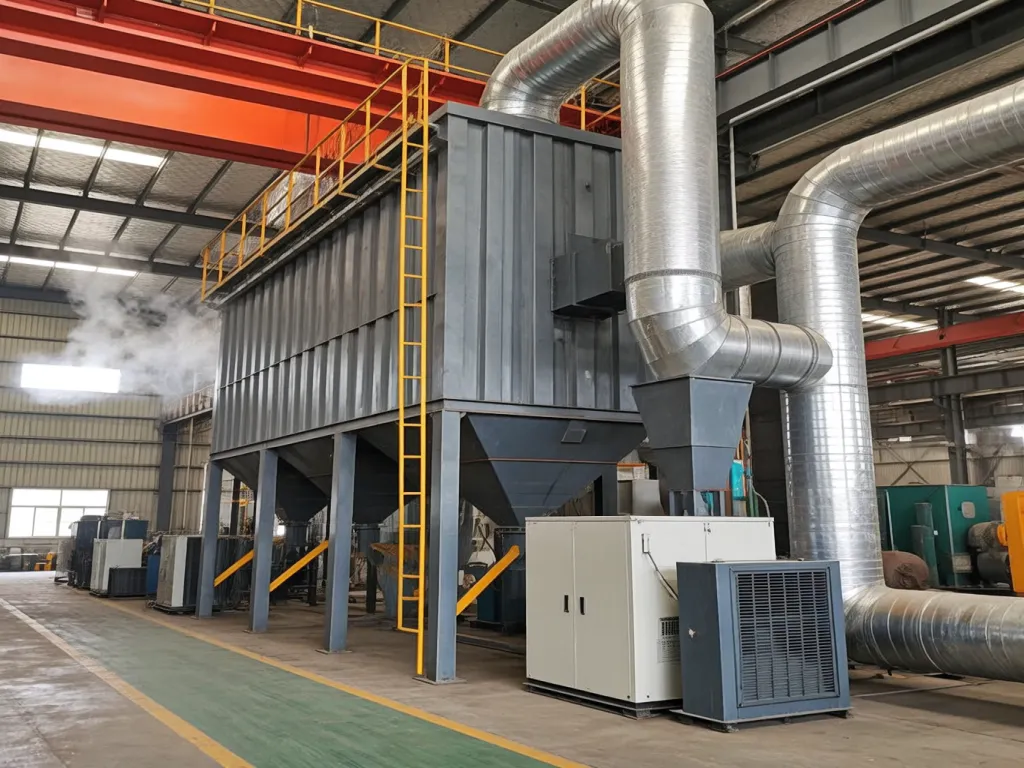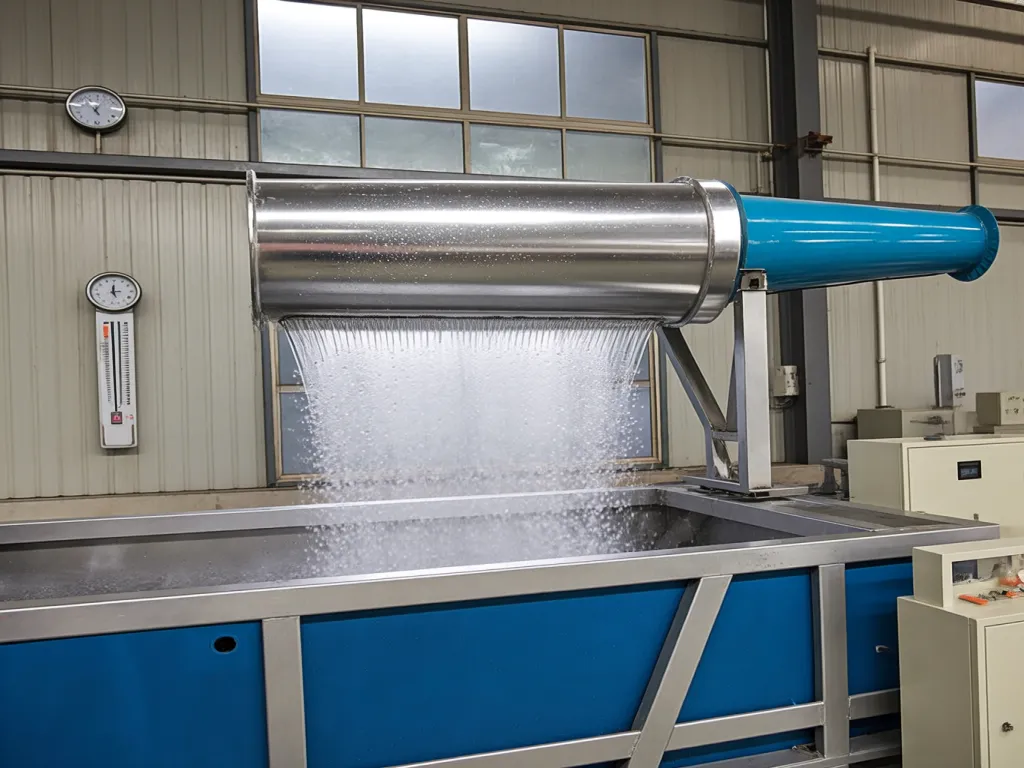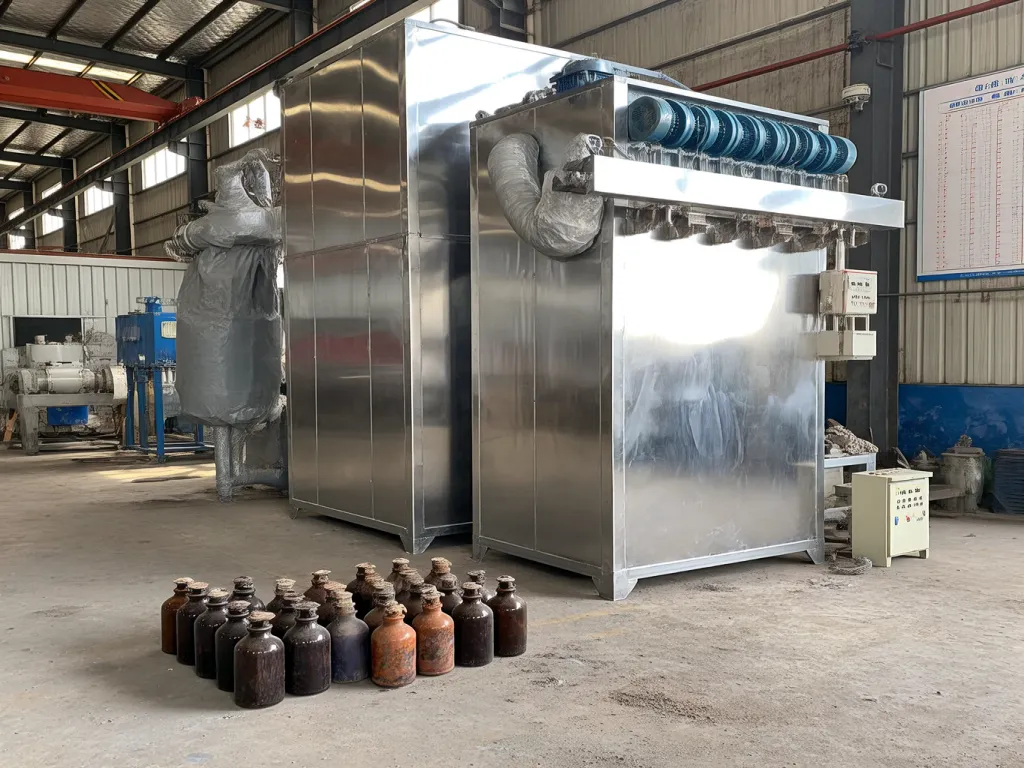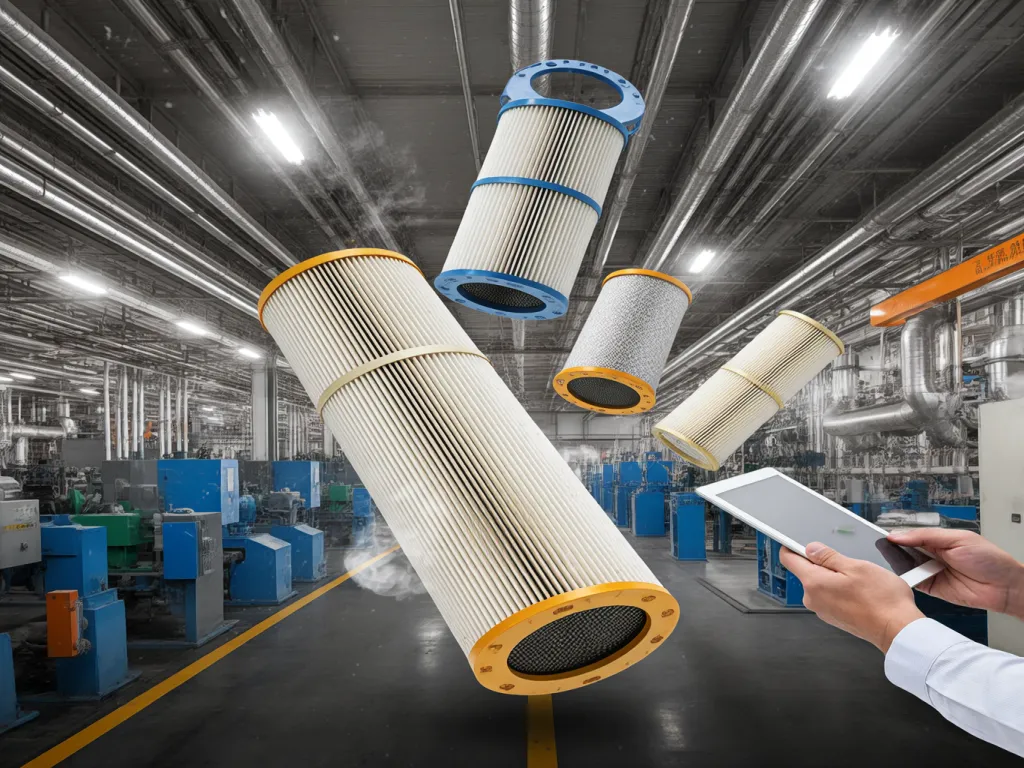Dust Scene Guide: Pick the Right Filter Bag Dust Collector
Navigating the maze of industrial dust collection? You’re not alone. Every factory faces unique challenges—be it searing heat, clinging humidity, or corrosive particles. The key to conquering these lies in one crucial piece of equipment: the filter bag dust collector. But here’s the catch: not all collectors are created equal. Choosing the wrong one could mean costly downtime, frequent maintenance, or even safety hazards. So, how do you match your dust-laden environment with the perfect collector? Let’s dive into the nitty-gritty of selecting a filter bag dust collector tailored to your factory’s specific needs.

High – Temperature Dust Scenario Selection: Analyzing the Impact of High Temperature on Filter Bag Materials and Equipment Structure, Recommending High – Temperature Resistant Filter Bag Materials and Corresponding Equipment Cooling Measures
When dealing with high – temperature dust scenarios, the selection of a filter bag dust collector becomes a critical task. High temperatures can have a profound impact on both the filter bag materials and the overall structure of the equipment. Let’s dive deep into these effects and figure out the best solutions.
First, let’s understand how high temperature affects filter bag materials. High temperatures can cause the filter bag material to degrade rapidly. For instance, common synthetic fibers like polyester may start to lose their strength and integrity at temperatures above 130°C (266°F). As the temperature rises, the fibers can become brittle, leading to cracks and tears in the filter bag. This not only reduces the filtration efficiency but also shortens the lifespan of the filter bag significantly. Imagine having to replace your filter bags frequently due to high – temperature damage; it’s not only costly but also disrupts the continuous operation of your industrial process. For those seeking high – efficiency solutions, polyester dust collector filter bags can be a starting point, though their temperature resistance is limited.
Now, consider the impact on the equipment structure. High temperatures can cause thermal expansion in the metal components of the dust collector. This expansion can lead to misalignment of parts, such as the filter bag cages and the housing. If the cages are misaligned, they can rub against the filter bags, causing abrasion and damage. Moreover, the high – temperature environment can also affect the seals and gaskets in the equipment. These seals are crucial for preventing air leakage and maintaining the proper pressure inside the dust collector. When exposed to high temperatures, the seals can harden and lose their elasticity, resulting in air leaks. This not only reduces the collection efficiency but also increases the energy consumption of the equipment as it has to work harder to maintain the required pressure. For reliable filter bag cages, you may explore Nomex filter bag cages which are designed to withstand challenging conditions.
So, what are the high – temperature resistant filter bag materials that can withstand these challenges? One of the top choices is P84 (polyimide) fiber. P84 filter bags can operate continuously at temperatures up to 260°C (500°F) and have excellent chemical resistance. They are known for their high filtration efficiency and long service life in high – temperature applications. Another great option is fiberglass filter bags. Fiberglass can handle temperatures up to 280°C (536°F) and is highly resistant to chemical corrosion. It’s a cost – effective solution for many high – temperature industrial processes. If you’re interested in fiberglass filter bags, you can find carbon black fiberglass filter bags as a specialized option.
But just having high – temperature resistant filter bags is not enough. We also need to implement proper equipment cooling measures. One common method is to use air cooling systems. These systems blow cool air into the dust collector to reduce the internal temperature. The cool air can be sourced from the surrounding environment or from a dedicated cooling unit. Another approach is water cooling. Water – cooled jackets can be installed around the dust collector housing. The water absorbs the heat from the equipment, keeping the internal temperature in check. However, water cooling requires careful design to prevent water leakage and corrosion of the equipment.
Have you ever considered the long – term cost savings of investing in high – temperature resistant filter bags and proper cooling measures? By choosing the right materials and cooling systems, you can significantly reduce the frequency of filter bag replacements and equipment maintenance. This not only saves you money but also ensures the smooth operation of your industrial process. For a range of high – temperature resistant filter bag options, you might want to check out FMS felt filter bags as well. So, when facing high – temperature dust scenarios, don’t compromise on the quality of your filter bag dust collector. Make an informed decision based on the impact of high temperature on materials and structure, and choose the best solutions for your specific needs.

High Humidity Dust Scenarios: Selection Strategies for Filter Bag Dust Collectors
When it comes to industrial filtration in high humidity environments, the challenges are unique and often underestimated. You’ve probably faced the frustration of filter bags clogging up, or worse, moisture condensation inside your dust collector. Let’s dive into why this happens and, more importantly, how to prevent it.
First off, high humidity can be a filter bag’s worst enemy. The combination of warm, moist air and fine dust particles creates a perfect storm for condensation. When the air inside the dust collector cools down, water vapor condenses on the cooler surfaces of the filter bags. This moisture acts like glue, causing dust particles to stick and eventually clog the filter. Not only does this reduce airflow, but it also increases pressure drop, making your dust collector work harder and less efficiently.
So, what can you do to combat this? One effective strategy is incorporating anti-condensation design into your dust collector system. This involves ensuring that the temperature inside the collector remains above the dew point of the surrounding air. How? By pre-heating the incoming air or using insulation to minimize temperature fluctuations. Some advanced systems even incorporate heating elements to maintain a consistent temperature, preventing condensation from forming in the first place.
But design tweaks aren’t the only solution. The choice of filter bag material plays a crucial role in high humidity scenarios. Traditional filter bags, made from materials like polyester or polypropylene, can absorb moisture and become heavy, leading to premature failure. Instead, consider switching to hydrophobic (water-repellent) filter bags. These specialized materials, such as PTFE (Polytetrafluoroethylene) or PPS (Polyphenylene Sulfide), have a natural resistance to water, preventing moisture absorption and the subsequent clogging issues. For example, our polyester dust collector filter bags can be upgraded to hydrophobic versions for better performance in high humidity.
Hydrophobic filter bags work by repelling water droplets, allowing them to roll off the surface rather than being absorbed. This not only keeps the filter bags clean but also maintains optimal airflow and pressure drop. Additionally, these materials are often more durable and resistant to chemical degradation, making them ideal for harsh industrial environments.
Now, you might be wondering, ‘How do I know if my dust collector needs anti-condensation design or hydrophobic filter bags?’ The answer lies in understanding your specific application. If your process generates a significant amount of moisture, or if the ambient humidity is consistently high, then investing in these solutions is a no-brainer.
But don’t just take my word for it. There are numerous case studies where industries have successfully implemented anti-condensation designs and hydrophobic filter bags, resulting in significant improvements in dust collector performance and lifespan. For instance, a food processing plant that switched to hydrophobic filter bags reported a 30% reduction in maintenance costs and a 20% increase in overall efficiency.
In conclusion, tackling high humidity dust scenarios requires a multifaceted approach. By incorporating anti-condensation design elements and selecting the right hydrophobic filter bags, you can ensure your dust collector operates smoothly, even in the most challenging conditions. So, the next time you’re faced with clogged filters or moisture issues, remember—there’s a solution out there, and it’s tailored just for your needs.
Understanding Condensation in Dust Collectors
Condensation occurs when warm, moist air comes into contact with cooler surfaces, like the inside of a dust collector. This is particularly problematic in high humidity environments where the air is already saturated with water vapor. As the air cools, the water vapor condenses into liquid water, which can then adhere to the filter bags. This not only clogs the filters but also promotes the growth of bacteria and mold, further compromising air quality and system performance. To mitigate this, it’s essential to maintain a temperature inside the collector that’s above the dew point of the surrounding air.
The Role of Hydrophobic Filter Bags
Hydrophobic filter bags are designed to repel water, making them ideal for high humidity applications. Unlike traditional filter materials that absorb moisture, hydrophobic bags allow water droplets to bead up and roll off the surface. This prevents the filters from becoming waterlogged and clogged, ensuring consistent airflow and pressure drop. Additionally, hydrophobic materials are often more resistant to chemical degradation, extending the lifespan of the filter bags and reducing the need for frequent replacements.

Corrosive Dust Scenarios: Selection Strategies for Filter Bag Dust Collectors
When it comes to industrial environments, corrosive dust is a silent but potent adversary. It doesn’t just cling to surfaces; it actively attacks the metal components of your filter bag dust collector, leading to premature wear, leaks, and even catastrophic failures. So, how do you protect your investment and ensure long-term, efficient operation in such harsh conditions? Let’s dive into the nitty-gritty of selecting the right materials and coatings for your dust collector.
First off, understanding the nature of corrosive dust is crucial. It’s not just about the dust itself but also the moisture content, temperature, and chemical composition that determine its corrosive potential. For instance, chlorides, sulfates, and acids in the dust can accelerate corrosion rates significantly. Now, onto the selection strategies. The most straightforward approach is to opt for materials that are inherently resistant to corrosion. Stainless steel, particularly grades like 316 or 316L, is a popular choice due to its high chromium and nickel content, which forms a passive oxide layer protecting the metal from further attack. When selecting filter bags for such environments, options like PTFE-coated polyester dust filter bags can provide additional resistance to corrosive substances.
But what if stainless steel isn’t an option due to cost or other constraints? Enter corrosion-resistant alloys (CRAs). These specialized metals, such as Hastelloy or Inconel, are designed to withstand extreme corrosive environments. They’re pricier, sure, but the longevity and reliability they offer can justify the investment in the long run. Another avenue is to apply protective coatings to the metal surfaces of your dust collector. Epoxy coatings, for instance, provide a barrier between the metal and the corrosive dust, preventing direct contact and thus slowing down the corrosion process. There are also advanced ceramic coatings that offer superior resistance to abrasion and corrosion, extending the service life of your equipment even further.
But how do you decide which coating is right for your application? Consider factors like the type of corrosive dust, the operating temperature, and the expected lifespan of the coating. Some coatings may perform exceptionally well in one scenario but falter in another. That’s why consulting with a materials engineer or a coating specialist can be invaluable. They can assess your specific needs and recommend the most suitable coating solution. For specific filter bag options, considering materials like nonwoven needle felt filter bags may be beneficial, depending on the application and environmental conditions.
Now, you might be wondering, ‘Isn’t there a simpler way?’ Well, there is. Regular maintenance and inspection play a pivotal role in mitigating corrosion. By catching early signs of corrosion, you can take corrective actions before they escalate into major problems. This includes cleaning the dust collector regularly, inspecting for signs of wear or damage, and applying touch-up coatings as needed. Additionally, considering the use of polyester pocket filter bags or polyester filter socks can provide flexible and cost-effective solutions for managing dust and particulate matter in various industrial settings.
In conclusion, selecting the right materials and coatings for your filter bag dust collector in corrosive dust scenarios is not a one-size-fits-all proposition. It requires a thorough understanding of the corrosive environment, careful consideration of material properties, and sometimes, a bit of trial and error. But by following these strategies, you can significantly enhance the durability and performance of your dust collector, ensuring it stands up to the toughest challenges.
Selecting the right filter bag dust collector isn’t just about ticking a box—it’s about ensuring your factory runs smoothly, safely, and efficiently, even in the toughest conditions. By understanding the unique demands of high-temperature, high-humidity, or corrosive dust scenes, you’ve already taken the first step toward a cleaner, safer workspace. Now, it’s time to put this knowledge into action. Share this guide with your team, bookmark it for future reference, or explore our website for more tailored solutions. Remember, the right choice today means fewer headaches tomorrow. Ready to breathe easier? Your perfect filter bag dust collector awaits.


